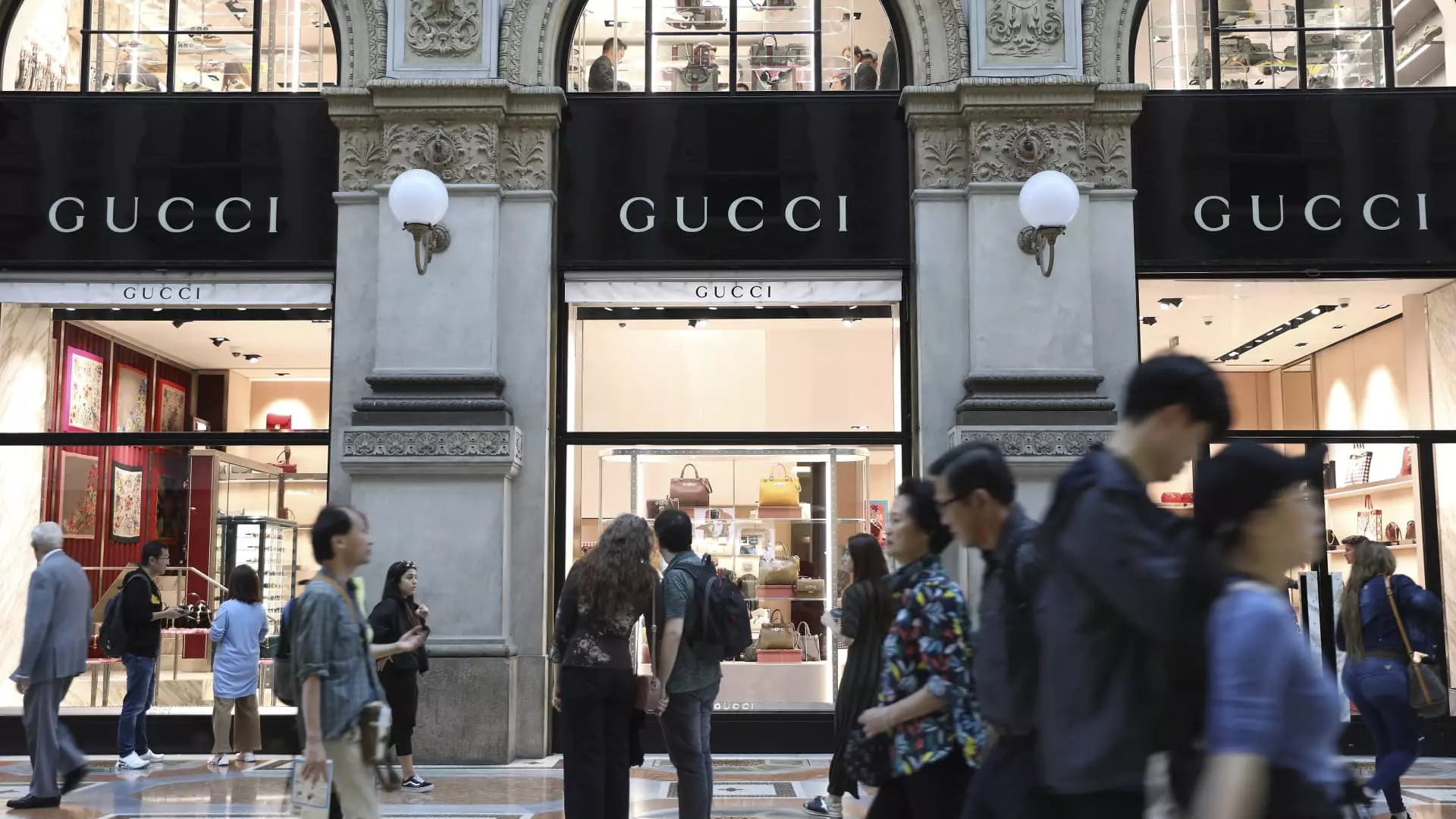The luxury goods industry in Europe, traditionally characterized by resilience and opulence, is gradually rebounding from a tumultuous period marked by economic challenges and shifting consumer behaviors. Following an encouraging earnings season, prestigious brands like Hermes and others are beginning to glimpse an optimistic future. However, the specter of a slowing Chinese market and potential U.S. tariffs cast a shadow over this resurgence, highlighting the intricate dynamics at play in the luxury market.
Recent financial disclosures from luxury brands have painted a cautiously optimistic picture for the sector. Notably, Hermes demonstrated remarkable performance in its fourth-quarter sales, a feat emblematic of the broader recovery narrative. This upbeat trend extended to other luxury titans, including the illustrious LVMH and Kering, both of which surpassed quarterly forecasts, reinforcing optimism among investors and analysts alike.
Simone Ragazzi, a portfolio manager at Algebris Investments, observed that 2024 posed significant challenges for the luxury market, but preliminary indicators suggest that a stabilization phase could emerge as early as 2025. Analysts, including Luca Solca from Bernstein, echoed this sentiment, asserting that the nadir of the downturn is likely behind us. Particularly, he noted a cyclical recovery driven largely by robust consumer spending in the U.S. and stabilizing consumer confidence in Europe.
Despite these promising signs, the luxury sector is grappling with persistent challenges—most notably, the sluggish recovery of the Chinese market, which has traditionally underpinned the luxury industry’s growth. Brands heavily reliant on Chinese consumers, such as Kering and L’Oreal, reported disappointing sales in this key market, raising concerns about the sustainability of the current recovery.
The potential for U.S. tariffs also looms large over European luxury brands. Zuzanna Pusz of UBS highlighted that while higher tariffs could lead to price inflation, forcing companies to pass costs onto consumers, not all brands would navigate this scenario with equal ease. For companies like Kering and Hermes, this may result in tougher-than-expected market conditions, especially if consumer purchasing power continues to wane.
The interplay between pricing strategies and consumer loyalty has become increasingly complex. Historically, luxury consumers have been selective, often gravitating towards brands that communicate value and quality. In this climate of economic uncertainty, it becomes imperative for luxury brands to justify their price points and innovate to differentiate themselves.
Madjo of Barclays emphasized the shift in consumer behavior toward purchasing fewer but higher-quality items. This trend underscores a growing expectation for luxury brands not only to deliver luxury products but also to embody excellence in craftsmanship and design. As the market evolves, brands that fail to adapt to these changing consumer preferences risk alienation from their core customers.
As the luxury sector navigates these multifaceted challenges, the pressure to innovate will only intensify. Analysts have pointed out that firms perceived as lacking in innovation face criticism and scrutiny, which could detract from their brand allure. In contrast, those that successfully marry traditional craftsmanship with modern appeal are likely to emerge as leaders in this intricate environment.
The emergence of standout brands, such as Richemont and Hermes, serves as a beacon for the industry, indicating that a return to form is possible even amid turmoil. Looking forward, addressing the fundamental question of what luxury means today will be crucial. As consumer expectations evolve, luxury brands will have to redefine their value propositions and recalibrate their offerings accordingly.
While the European luxury sector is witnessing some revival indicators following a challenging era, considerable hurdles remain. The fragility of the Chinese market, the prospect of U.S. tariffs, and shifting consumer preferences necessitate a nuanced approach. The long-term health of luxury brands will hinge on their ability to adapt and respond to these external pressures while maintaining the allure that defines them.
As the sector braves complexities, the focus on quality and innovation will remain paramount. The road to recovery may be winding, but the potential for growth and redefined luxury experiences presents opportunities for those willing to embrace change. Ultimately, the future of luxury will depend on its capability to resonate with a discerning consumer base amidst an evolving global landscape.

Leave a Reply